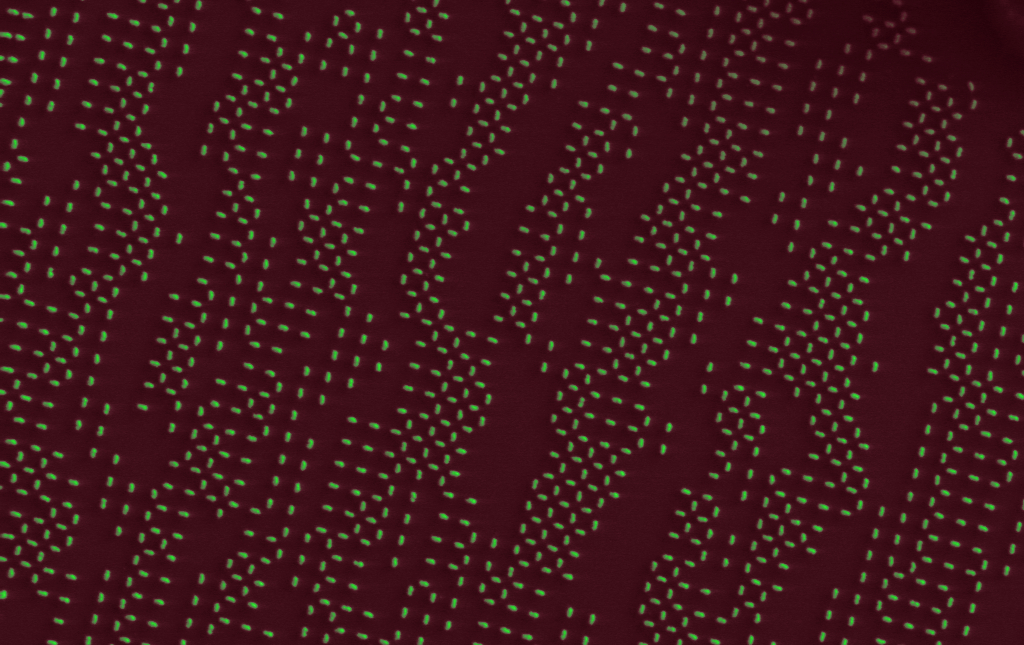Write Me!
The second prong of the CMMPE research strategy covers the research and development of new technologies. Some technologies currently in development include
- On the nanoscale, light behaves very differently to the way we are used. Using advanced nano-patterns such as the one shown above, different properties of light can be filtered for, most interestingly, for very narrow bandwidth filters. This is of great interest for medical imaging as it allows an unprecedented level of detail in colour information, far more than your mobile phone’s red green and blue.
- As part of our research into endoscopy, we are developing image recovery techniques. Images sent down an optical fibre get heavily distorted and using holographic approaches allows us to recover the original image. This is of great importance to endoscopy as it improves the quality of the image recieved without the need to stick a camera in a patient.
- One area of particular interest is in the algorithms used for generating holograms. As part of this, we are developing the HoloGen Suite, a suite of tools for generating 2D and 3D holograms using a wide array of approaches. Based on a customisable toolchain. HoloGen aims to significantly improve the state-of-the-art performance of these approaches.
- Spatial Light Modulators are fundamental to holographic displays and imaging and are used to control a single property of a light field such as phase or intensity. Using our in-house expertise we are building a complete toolchain for our own liquid crystal based spatial light modulators.
- Optical correlators are widely used in vision systems for defense applications and the CMMPE has been fundamental in the development process of these approaches.
What is a Spatial Light Modulator
In order to make the transition from analogue recording and reconstruction to computer generated holography, a device capable of manipulating or modulating a light field is required. Spatial Light Modulators are widely used in holographic systems such as projectors and lithography for this purpose.SLMs are devices capable of modifying a single property of an incident light field, such as phase or amplitude and are highly dependent on the technology used.
Liquid Crystal Spatial Light Modulator
While many types of spatial light modulator exist, by far the most common for holography are liquid crystal devices. While not as powerful as some alternative techniques their flexibility and customisability is unparalled. The CMMPE is keen to be the first academic group to be able to do the entire development process in-house without the need for sub-contracting.


